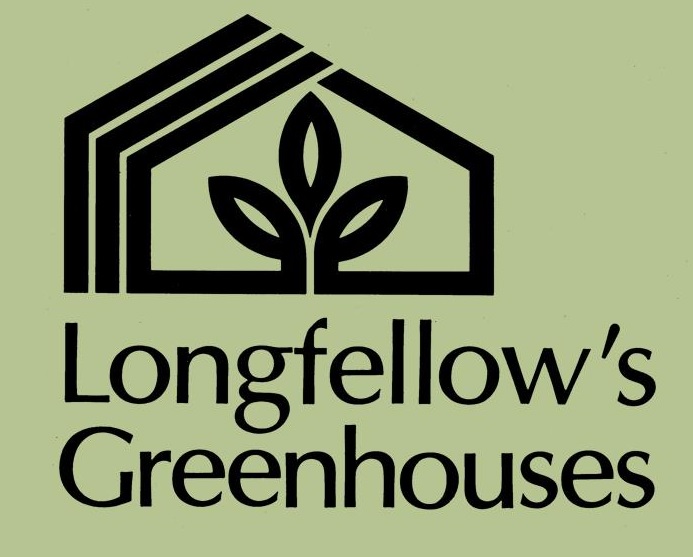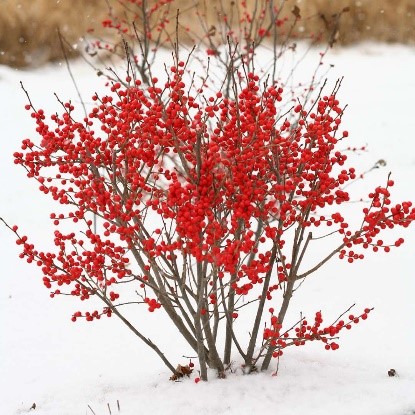Longfellow's Blog
Color For Your Winter Landscape
Color For Your Winter Landscape
Longfellow’s Nursery
February 2023

Photo Courtesy of Monrovia.com
When we finally reach this latter part of the winter, we start to get excited about springtime. Although the official start of spring is still over a month away, our long winters here in Maine can make it seem like spring is just a far-off dream. Warmer temps and longer daylight hours have us thinking about all the color that will once again fill our yards when our plants begin to bloom. But what about color right now? A splash of color in our garden during this time of the year when our views mainly consist of dirty snowbanks and salty sidewalks is always worth admiring.
There are many plants that can fill your yard with color even during the dormant winter season when not much else offers contrast against the white snow and the gray branches of our dense forests. Here are some of our top choices for adding winter color to your gardens and yard. We’ll focus solely on trees and shrubs for this discussion. Use some of these tips now to plan your purchases this upcoming season and add some great color to your yard for next winter!
Bailey’s Red-Twig Dogwood
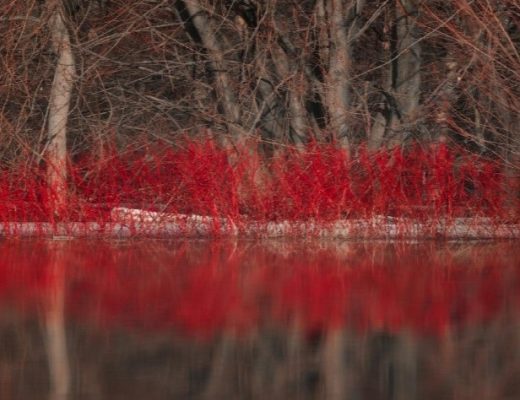
H: 10’ W: 10’
Full Sun to part Shade
Bailey’s Red Twig Dogwood has clusters of white flowers at the ends of the branches in late spring. It has green deciduous foliage. The pointy leaves turn an outstanding brick red in the fall. It produces white berries in late summer. The red branches are extremely showy and add significant winter interest.
Yellow-Twig Dogwood
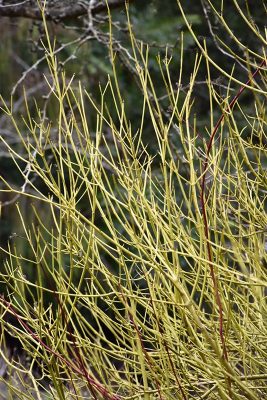
H: 8’ W: 10’
Full Sun to part Shade
Yellow Twig Dogwood has clusters of creamy white flowers at the ends of the branches in late spring. It has green deciduous foliage. The pointy leaves turn yellow in fall. It produces white berries in late summer. The yellow branches are extremely showy and add significant winter interest.
Winterberry (Red Sprite)

H: 4’ W: 4’
Full Sun to partial Shade
Red Sprite Winterberry is primarily grown for its highly ornamental fruit. It features an abundance of magnificent red berries from mid fall to late winter. It has dark green deciduous foliage. The pointy leaves do not develop any appreciable fall color.
Common Witch Hazel
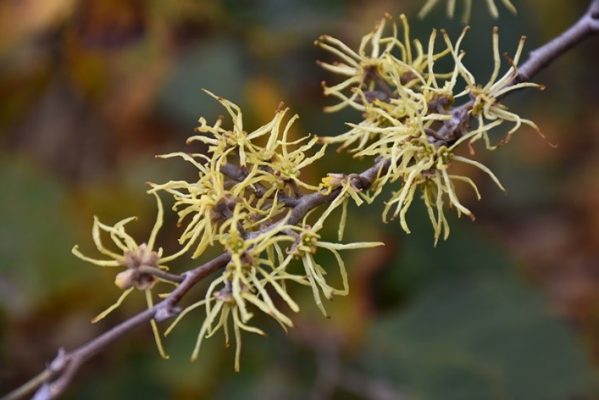
H: 18’ W: 20’
Full Sun to Full Shade
Common Witch hazel has fragrant yellow strap-like flowers along the branches in late fall into winter before the leaves, which are interesting on close inspection. It has green deciduous foliage. The serrated round leaves turn an outstanding yellow in the fall.
Spruce (Blue & Green Evergreens such as Montgomery (below left) and Weeping White (below right))
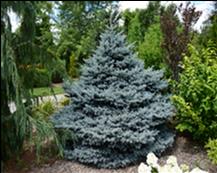
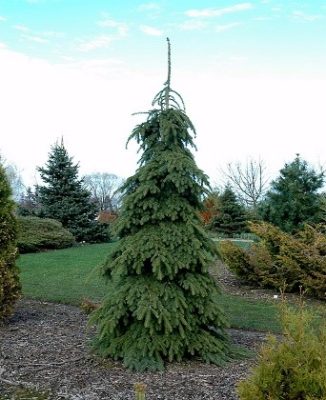
Montgomery Spruce H: 10’ W: 8’
Weeping White Spruce H: 50’ W: 10’
Full Sun
Montgomery Blue Spruce is a dwarf conifer which is primarily valued in the landscape or garden for its distinctively pyramidal habit of growth. It has attractive silvery blue evergreen foliage. The needles are highly ornamental and remain silvery blue throughout the winter.
Weeping White Spruce is primarily valued in the landscape for its distinctively pyramidal habit of growth. It has bluish-green evergreen foliage which emerges light green in spring. The needles remain bluish-green throughout the winter.
Paper Birch
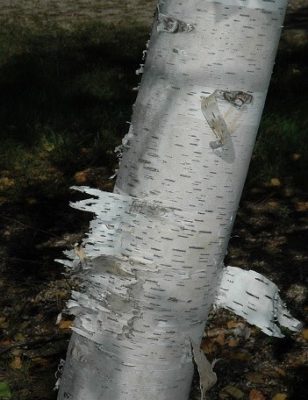
H: 60’ W: 35’
Full Sun to partial Shade
The king of the northern birches, with snow-white peeling bark and gold fall color; needs adequate moisture and well-drained soils; a great accent tree, and one of the best for winter value, keep it happy to avoid problems with birch borer.
Some other great winter color options for your yard: Balsam Fir, any Spruce variety, Canadian Hemlock, Ninebark, Arctic Willow, Dappled Willow, all Winterberry, all shrub Dogwood, Royal Frost Birch, River Birch, and Juniper. These are just some of our top choices, but there are so many other plants out there that really do put on a show even after they have gone completely dormant for the cold winter months. Here in Maine our Winter Dormant season nearly makes up half of the year, so why waste that amount of time not enjoying some of the plants you have in your gardens? Always consider each season when planting in your yard, not just the summer blooming season.
Consider plants not just for their unique color but also for their unique branching habits, growth habits, and bark. Examples here would be Harry Lauder’s Walking Stick, Weeping spruce or Larch, and Paperbark Maple.
-Longfellow’s Nursery
